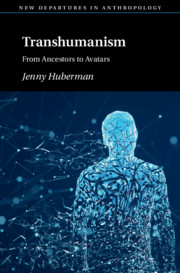Book contents
- Transhumanism
- New Departures in Anthropology
- Transhumanism
- Copyright page
- Dedication
- Contents
- Acknowledgments
- Introduction
- One Is Transhumanism a Revitalization Movement?
- Two Ancestors and Avatars
- Three Happily Ever After
- Four The Social Skin, the Antisocial Skin, and the Pursuit of Morphological Freedom
- Five Decoding the Self
- Six Rethinking Kinship Systems
- Seven From Original Affluence to Posthuman Abundance
- Conclusion
- Notes
- Bibliography
- Index
Six - Rethinking Kinship Systems
Published online by Cambridge University Press: 10 December 2020
- Transhumanism
- New Departures in Anthropology
- Transhumanism
- Copyright page
- Dedication
- Contents
- Acknowledgments
- Introduction
- One Is Transhumanism a Revitalization Movement?
- Two Ancestors and Avatars
- Three Happily Ever After
- Four The Social Skin, the Antisocial Skin, and the Pursuit of Morphological Freedom
- Five Decoding the Self
- Six Rethinking Kinship Systems
- Seven From Original Affluence to Posthuman Abundance
- Conclusion
- Notes
- Bibliography
- Index
Summary
This chapter explores some of the ways transhumanists envision the posthuman family. From attempts to create digital offspring through the use of software fertility doctors, to establishing intimate relationships with robotic kin, to advocating for forms of biological reproduction that involve multiple genitors and occur in a laboratory rather than a womb, transhumanists propose that the posthuman family will look considerably different than it does today. The point of this chapter is not to determine whether or not these possibilities will be actualized in the future, but rather, to explore and explain why this way of construing kinship makes sense to transhumanists. In so doing, the chapter will further our understanding of transhumanism and provide yet another example of the diverse ways our species has attempted to imagine and configure something we call family.
- Type
- Chapter
- Information
- TranshumanismFrom Ancestors to Avatars, pp. 155 - 181Publisher: Cambridge University PressPrint publication year: 2020

